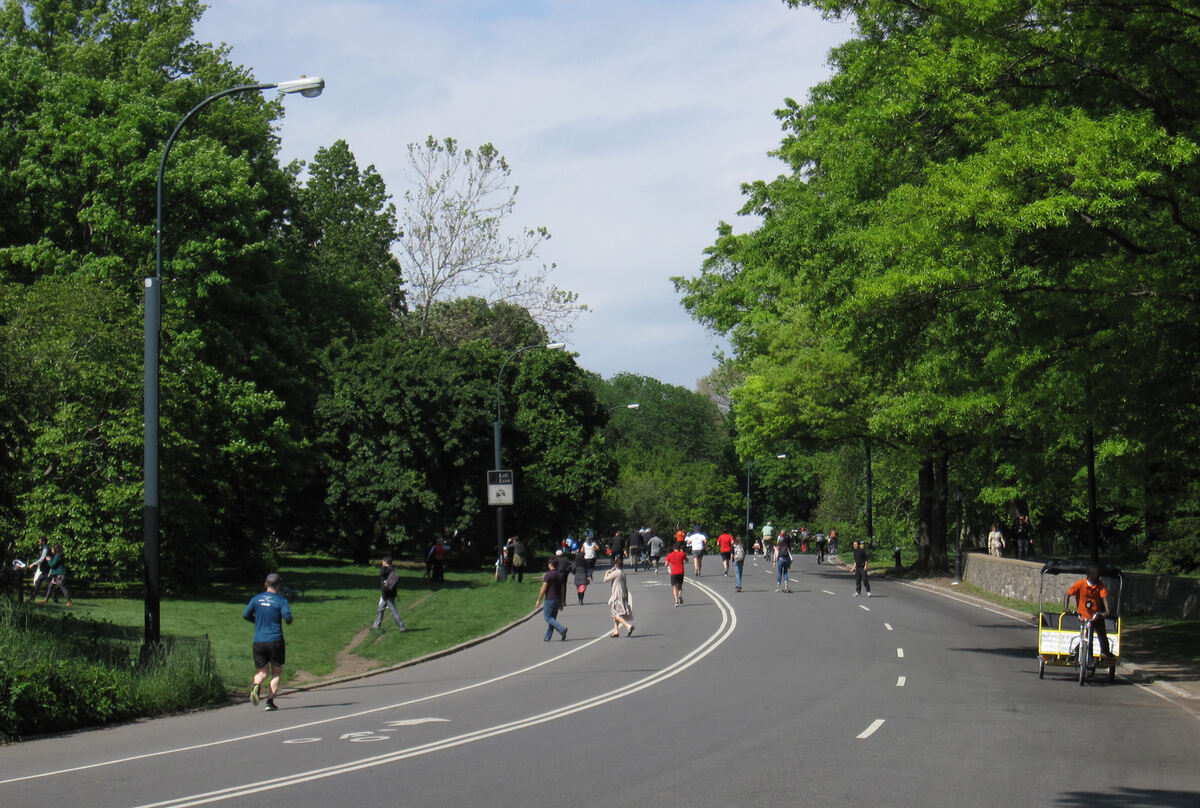
Photo: Scarlet Sappho / Flickr
This week, the Central Park Conservancy, in collaboration with the Department of Transportation, released a report outlining ways to make the six-mile loop that circles the park’s sprawling 843 acres safer for all users. From pedestrians and runners to skaters to cyclists, the path is also shared by horse-drawn carriages and pedicabs jockeying for position. The findings, based on a year-long study of how the park is used, propose changes to enhance safety for everyone.
Advertisement
“There should be a separation of ways…for efficiency and amenity of movement, and to avoid collision or the apprehension of collision, between different kinds of traffic,” wrote Frederick Law Olmsted (1822-1903), an American landscape architect whose first project was Central Park. The report highlights this historic quote, which remains relevant today, but the times have certainly changed, and the Conservancy is looking to adapt. In the park’s early years, the winding drive was constructed to provide scenic views for horse-drawn carriages while also making it harder to speed.
Perhaps most glaring in the report is the park’s plan to remove traffic lights and replace them with “more effective signals and crosswalks.” The report notes that most people do not pay attention to the overhead lights, a throwback to the days when private cars were allowed in the park—an era that ended in 2018. The report also notes “the possibility of pedestrian-height, flashing beacons with icons that speak more directly to cyclists would be an improvement.” Any removal of traffic signals would require approval from The New York City Department of Transportation, and the Conservancy would implement changes in a small-scale pilot project in one section of the park as a case study to start, if approved.
The Conservancy reports that 522 collisions were reported to the NYPD in Central Park between 2018 to 2022, 472 resulting in injury and one fatality. Several key challenges in addressing this issue are outlined in the report, including competing uses and speeds, inconsistent lane markings or signage, and merge point conflicts—all of which make consistent traffic enforcement and pedestrian crossings difficult. The report also highlights the need for better cross-park bike routes.
The survey recorded responses from 10,048 people, with 48% identifying as pedestrians, 45% as cyclists, 3% as users of pedicabs, horse carriages, or vehicles, and 3% as users of other micro-mobility devices. The Conservancy’s executive summary states that the recommendations “offer a menu of interventions worthy of consideration, and in sum could ensure that Central Park can continue to serve as a sanctuary from the pressures of city life while providing a space for joyful activity, fostering a welcoming environment for all visitors.”
Advertisement
Near-Term Recommendations
- Allocate space consistently across the Drives and pilot the use of new colors and textures on the roadbed.
- Better separate pedestrians from cyclists and other higher-speed users.
- Undertake an analysis of every crosswalk in the Park, with an eye toward better protecting pedestrians.
- Guide pedestrians to the historic archways to reduce conflicts on the Drives.
- Increase educational outreach and targeted enforcement to promote safety.
- Collaborate with City agencies to improve bike infrastructure on all streets surrounding the Park.
Advertisement
Medium-Term Recommendations
- Remove existing vehicular traffic signals and replace them with signals designed for bikers and pedestrians.
- Continue the collaboration with City agencies to further expand and improve bicycle infrastructure, including a designated bike lane on the east side of the Park.
- Explore a robust bike lane capital improvement on the 86th Street transverse and examine the feasibility of bike lanes for other transverses.
- Prioritize an in-park bike lane along the 86th Street bridle path.
- Look into extending the pedestrian-path network running parallel to the Drives to reduce crowding and conflicts in the busiest areas.
- Create tailored redesigns for specific areas where user conflicts frequently occur.
- Form a Pedicab Reform Working Group to improve their operations.
Longer-Term Recommendations
- Explore a raised pedestrian lane at the southern, most crowded section of the Park.
- Explore geometric changes at key locations along the Drives.
Have a news tip? Send it to us here!



Not so long ago, before the bridle path along the 86th St. transverse became a parking lot for the private cars of members of the police department, there was plenty of space for runners and cross-town walkers.
This plan will fix nothing, cost a lot and may be undone later. Leave this alone.
Bono likes this plan